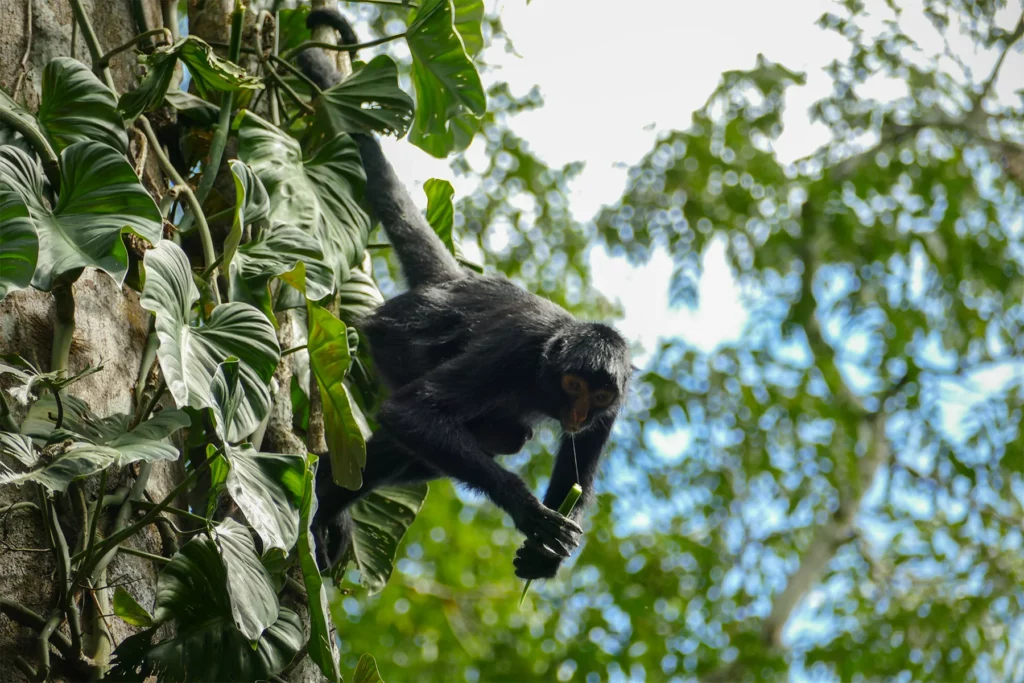

IMPACT PROMISE
Our Partners are carefully selected due to their high conservation impact
Partner Snapshot
Madre de Dios, Peru
- Capacity Building and Training
- Scientific Research
- Wildlife Conservation
- Black face Peruvian spider monkey
- Iron wood
- Harpy eagle
- Selective logging
- Lack of capacity building for local students
- Lack of field equipment
- Training students
- Securing equipment
- Installing satellite internet connection
The Challenge
Since 2018, Kawsay Biological Station has managed the conservation of a forest almost 500 acres in size, next to the Tambopata National Reserve. Before 2018, this area was heavily impacted by selective logging, mining, and hunting. Since their presence in the area, these activities have remained controlled.
A group of reintroduced spider monkeys is also found in this forest and Kawsay members are focused on ensuring their viability. A large focus of Kawsay's work is managing the forest through the protection of spider monkeys and involving local students in research and conservation action.
Urgent Appeal
The illegal activities continue to occur around the Kawsay concession, and the risk and threat are present. It is important that Kawsay staff, interns, and volunteers maintain a constant presence within the forest, while they carry out patrol activities, study wildlife, and above all, monitor the monkeys. In doing so, the forest is monitored and illegal activities have stopped altogether.
Increased access to scientific equipment will help Kawsay members to better understand the ecological requirements of the spider monkey, and will improve the training experiences of local students.
Why Your Donation Matters
Your donation will support the training of local students so they can have better educational opportunities and contribute to conservation long into the future. It will also help to ensure the viability of a reintroduced group of spider monkeys who are important seed dispersers and help the natural regeneration of the forest.
The return of this species to an area where they were once considered extinct will help to restore the composition and function of this forest.


